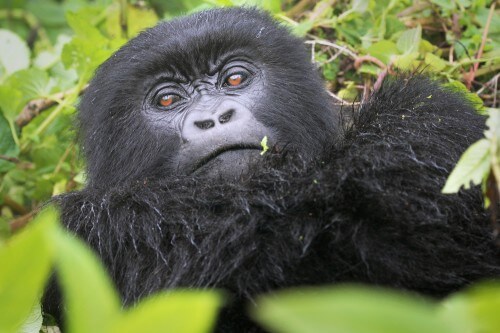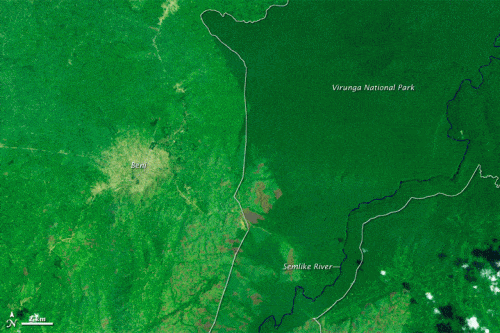According to Greenpeace Africa, the development of industrial agriculture appears to be the greatest threat to the biodiversity of the rainforests in Africa. If large-scale measures are not taken to preserve the habitats, a wide variety of different and diverse species, especially the populations of African monkeys, will be severely damaged.

In the past I wrote about the negative impact of commercial companies that "develop" areas of industrial agriculture such as oil palm plantations, jatropha and other sources of plant fuel. Most of the blame lies with Chinese companies and they are joined by American and European companies. Now the Greenpeace Africa organization publishes a serious warning about the danger facing large areas of rainforest in Cameroon and Nigeria.
According to the organization, the expansion of the development of industrial agriculture (agribusiness) in Central Africa is seriously harming the rain forests where species of monkeys and apes live, such as chimpanzees, gorillas, mandrill monkeys and others, which are in danger of extinction. In addition to this, the "development" harms native societies whose survival relies on the forest - fruit gathering, etc.
Satellite photographs show that over 30,000 square kilometers of rainforest in southern Cameroon bordering the Dja Faunal Reserve were cut down by a Chinese company (Hevea Sud) for the purpose of planting oil palms. The reserve declared by UNESCO as an international heritage site serves as a home for lowland gorillas, chimpanzees and mandrill monkeys.
According to Greenpeace Africa, the development of industrial agriculture appears to be the greatest threat to the biodiversity of the rainforests in Africa. If large-scale measures are not taken to preserve the habitats, a wide variety of different and diverse species, especially the populations of African monkeys, will be severely damaged.
In the past, the UNESCO people asked to carry out an inspection that would assess the possible damage to the reserve (Dja), but the local authorities did not give permission, perhaps because the concession areas for "development" are in the home district of Paul Biya, the president of Cameroon.
The deforestation by the Chinese is much greater than the deforestation carried out by an American company (Herakles Farms) which is active in southwest Cameroon and "develops" oil palm plantations in areas vital to wildlife while at the same time preventing natives from relying on the forests as a source of life and livelihood.
African companies are not "clean" either. A Greenpeace inspection revealed that a Cameroonian company (Azur) is marking a large area of dense forest adjacent to the Ebo forest with the aim of turning it into an oil palm plantation. The Abu forest is home to many primates as well as other mammals, among them the rare forest elephants, and as such the forest is in the process of being declared a national reserve.
The Greenpeace people contacted "Azor" twice with a request to detail the plans... without a response, the chimpanzee population that lives on the borders of Nigeria - Cameroon is one of the groups of mammals that is in the most serious danger of extinction, mainly because of the destruction of its habitat but also because of illegal poaching. When the loggers reach the forest, roads are opened that allow the hunters access to their prey,
Foreign companies are often given concessions to "develop" industrial agriculture in West and Central Africa without proper planning, without comprehensive thought on the use of the land, and without coordination with the (human) inhabitants of the area, as a result when forests are cut down, friction is created between the "developers" and local populations And since the "development" areas are often adjacent to important areas in terms of the variety of species where, in addition to friction with people, there is also serious harm to wild animals.
Greenpeace spokespeople say that: There is frequent panic and it is mandatory for governments to act in the correct and sustainable planning of open spaces, before distributing concessions to anyone who wants them. Projects that are "developed" without local consultation and participation and without consideration must not be allowed. It is forbidden to allow projects that are planned for areas of high environmental importance.

In the Congo basin stretches the second largest rainforest in the world (after the Amazon). In addition to man's moral duty to preserve his natural environment and therefore preserve the forest. The wealth of species in the forest and the great variety of species provides food, water, shelter, medicine and more for millions of people, the preservation of forests is also essential for mitigating climate change. Despite this, the forests in the Congo Basin are under constant pressure due to the increased demand for resources and more so due to a lack of law enforcement due to corruption.
On a personal note, I invite consumers to check the ingredients of the products they consume and, if possible, avoid consuming products that contain palm oil.

2 תגובות
As we all know, the Chinese don't stop at a red light, neither do the Americans. May God help our planet.
Thanks for the article.